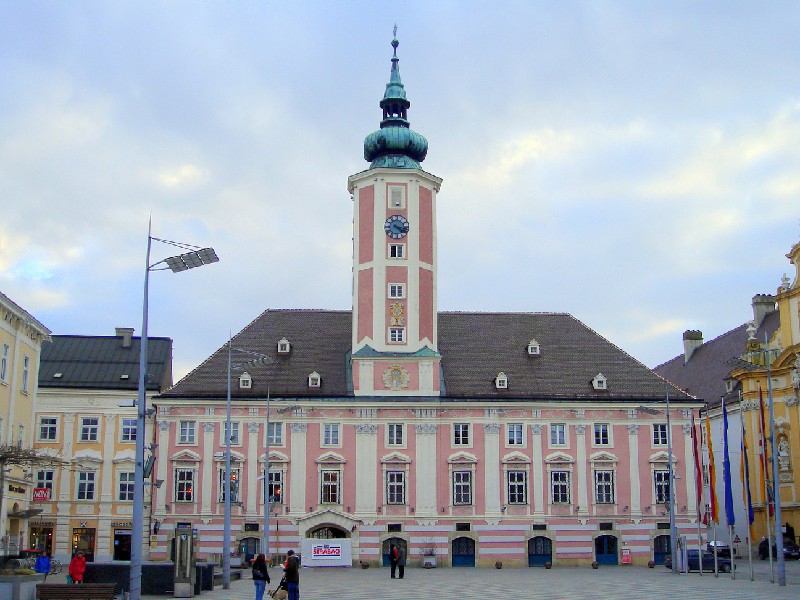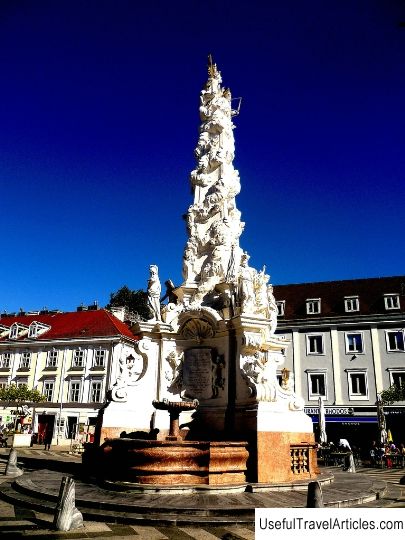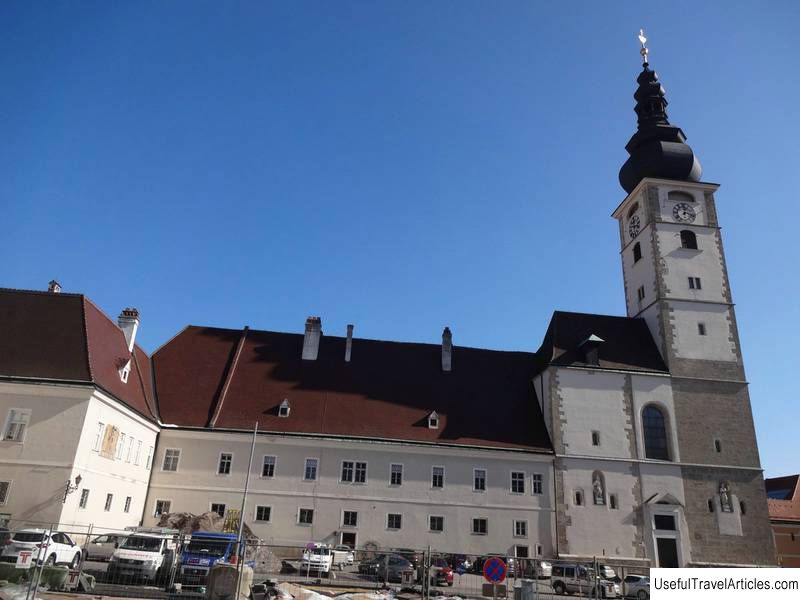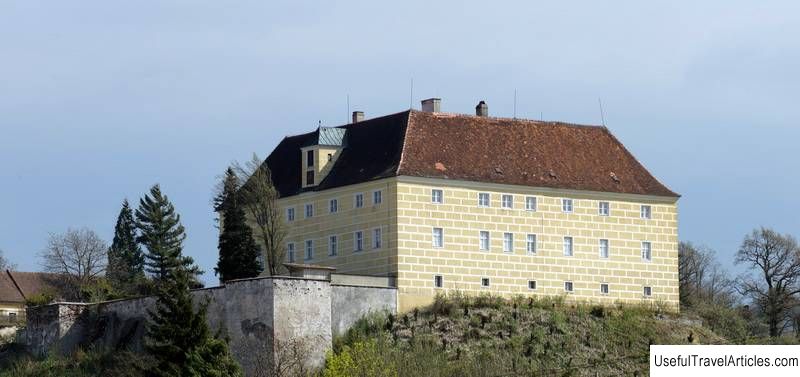St. Polten. Recreation and entertainment
Rating: 7,7/10 (6741 votes)  HistorySt. Polten, like all European cities, has a long and eventful history. In Roman times, the site of the modern city was the site of the Roman city of Elium Centium, and St. Polten was formed around the Benedictine abbey of St. Hippolytus in the 8th century. The abbey, founded in 771, gave the city its name. The status of a city was given to St. Polten in 1159. Until the end of the 15th century, the city belonged to the bishopric of Passau, and three centuries later it became the center of a new bishopric. In 1986 Sankt Polten was named the capital of Lower Austria.  Town Hall Square TourismMost Austrian cities are famous for their winter activities. In the vicinity of St. Polten, there are also several equipped ski slopes and tourist centers. But even in the city itself, the tourist has something to do. The oldest city in Austria, St. Polten is filled with monuments of architecture, culture and history. The city fascinates with its unusual beauty, luxury of squares and buildings, most of which are created in the Baroque style. Among the must-see sites, there are several that are included in any city tour. In particular, this is the Town Hall Square, located in the very center of the Old Town. There are many attractions in and around the square, for example, the Column of the Holy Trinity, the Franciscan Church and others. It is also interesting to visit the ancient castles – Pottenbourn, which has a rich collection of medieval cups, and Wasserburg; the bishop's residence and the Carmelite Monastery. In the part of the city that was the former Roman city of Elium Centium, there is Cathedral Square, which recreates the atmosphere of that era.  Town Hall There are modern sights in the city to visit. This is the Government Quarter, designed by E. Hoffman, an architect, and opened in 1997. This is the cultural center of St. Polten, where government offices, exhibition and festival halls, and concert venues are concentrated. All the most beautiful monuments of architecture, cultures, other attractions, you can get around during the day on foot. This is how you can feel the atmosphere of the city and get acquainted with all the small but beautiful flower sculptures, architectural compositions, and original monuments. The city also has a unique dinosaur park Traismauer, a museum of medieval life Nussdorf. Interesting excursions begin from the city to the foot of the Voralpenland mountain, to the Wachau grape valley, to the Waldviertel lakes surrounded by dense coniferous forests, to the Prehistoric Museum under open air in Asparn an der Zaya, to the Museum of Shipping in Spitz an der Donau, to the Puppet Museum in Waldkirchen an der Thaya. In addition, in St. Polten annual grand events – ATP tennis tournament and church concert.  Column of the Holy Trinity AttractionsTown Hall Square – the central square of the city. In the middle of it rises the Column of the Holy Trinity. Town Hall – the main symbol of the city. The Town Hall is a beautiful Baroque building on the south side of Town Hall Square. Today, this building houses the offices of the Senate, City Council and the Mayor of St. Polten. Column of the Holy Trinity – a unique religious monument created in the 18th century in gratitude for ridding the city of the plague. It is a column of white marble, decorated with reliefs and statues (height 15 meters), created in the Baroque style. At the foot of the column is a pool with a fountain. Located in the very center of the Town Hall Square. English Maidens building – a splendid baroque building that demonstrates the luxury of this style. The building, which looks like a splendid palace, today houses the Virgin Mary Institute, where modern education is taught in terms of religious traditions and rules.  Festival Theater Franciscan Church – one of the most magnificent, beautiful and oldest buildings of the late Baroque period in St. Polten. The building also contains original elements of the Rococo style. The church is located in the northern part of the Town Hall Square. Pottenbrunn Castle – the majestic castle of the XII century, rebuilt many times over the history of its existence, is still surrounded by moats with water. The castle is also surrounded by a beautiful English garden. The entrance is closed to visitors inside, however, a rich collection of medieval cups is exhibited here. Wasserburg Castle – a 12th century castle near St. Polten. Around the castle is the beautiful Wachau vineyard with many monasteries, castles and old villages. The Baroque castle is surrounded by a historic park where pedigree horses graze. In addition, there is a picturesque lake, a huge swimming pool, golf courses, and a tennis court. The owners of the castle rent it out for various celebrations. Festival Theater – theater, opened in 1997, the largest in Sankt Polten. It hosts not only theater performances, but also other cultural events.  Synagogue Synagogue – an old building on the southeast side of the city. The synagogue is a fine example of the late Art Nouveau style. Today, the building houses the Institute for the History of Austrian Jews, sometimes various meetings and festivals are held. Museum of Lower Austria – museum in the new, modern part of St. Polten. It is the main art gallery in the region. Bishop's Residence – an old building, built in 1653. Today, it houses the Diocesan Museum, which displays unique objects of religious art. the modern part of St. Polten. It is the main art gallery in the region. Bishop's Residence – an old building, built in 1653. Today, it houses the Diocesan Museum, which displays unique objects of religious art. the modern part of St. Polten. It is the main art gallery in the region. Bishop's Residence – an old building, built in 1653. Today it houses the Diocesan Museum, which displays unique objects of religious art. We also recommend reading Graz. Recreation and entertainment Topic: St. Polten. Recreation and entertainment. |




